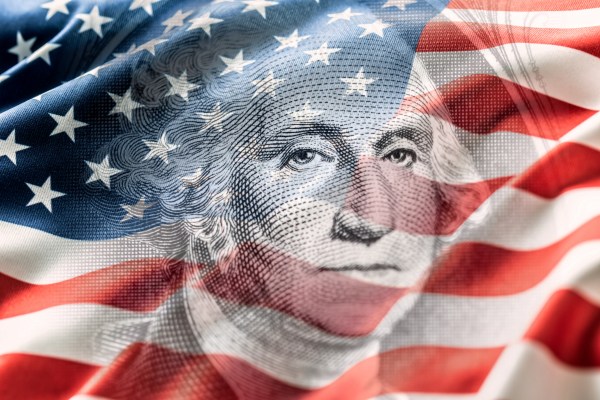In August, the Labor Department announced that it had overstated the number of jobs added to the U.S. economy from March 2023 to March 2024 —and by quite a bit. The economy added 818,000 fewer jobs than estimated, a downward revision of nearly 30 percent.
With an election looming and a presidential race turned upside down just weeks before by the withdrawal of President Joe Biden, the revision took on a political dimension.
“[The Biden administration] defrauded the people of our country with the job numbers,” former President Donald Trump said on Fox & Friends in response to the revised numbers. “They thought they were going to keep those numbers until right after the election, when they could announce a revision.”
In October’s jobs report, the numbers for the previous month surpassed expectations, with the Labor Department reporting the addition of 254,000 new jobs, numbers that would indicate a healthy economy. Florida Sen. Marco Rubio, who serves on the Senate Appropriations subcommittee for the Labor Department, made a baseless accusation that called the numbers into question. “Another fake jobs report out from Biden-Harris government today,” Rubio wrote in a post on X. “16 of the last 17 reports have been significantly revised downwards after media helps them with their fake headlines.”
Rubio is correct that there have been significant recent downward revisions in the monthly jobs reports from the Labor Department’s Bureau of Labor Statistics. But the reasons for the adjustments are varied, including survey response timing, not politics, according to Brendan Walsh, a principal at the financial market analysis firm Markets Policy Partners who has studied how the agency compiles the reports.
Every month, the Bureau of Labor Statistics (BLS) conducts two surveys: the Current Employment Statistics (CES) survey and the Current Population Survey (CPS). The CPS, which the Census Bureau conducts by a sample survey of 60,000 households by phone call, is how the BLS arrives at the unemployment rate. The CES, on the other hand, surveys around 119,000 non-agricultural businesses and government agencies, providing the BLS with the data needed for the monthly jobs numbers, which the agency describes as estimates. These businesses respond to the survey voluntarily—they are not required to submit their employment numbers.
“For the jobs data, the way [the BLS does] it is they ask a company, ‘How many people did you have employed on the [payroll period] that includes the 12th of the month?’” Walsh told The Dispatch. Businesses often respond to these surveys late, and this data is not included in the data released at the beginning of the next month. This can lead to significant changes in the jobs report numbers as more responses are received, creating the need for revisions.
“CES estimates are considered preliminary when first published each month because not all respondents report their payroll data by the initial release of employment, hours, and earnings,” Stacey Standish, a BLS spokesperson, told The Dispatch. “For a given month, BLS publishes second preliminary estimates 1 month after the initial release and final sample-based estimates 2 months after the initial release. The estimates published with the second and third (final) releases incorporate additional data from respondents and corrected data.”
For the October report, the business response rate was unusually low, with only 62.2 percent of businesses filing on time—the smallest response rate for any September survey since 2002. Therefore, the stage is set for a possible large revision.
Further, events that have nothing to do with the strength of the economy can affect the jobs reports. With hurricanes Helene and Milton causing severe damage in parts of the Southeast and 33,000 Boeing machinists currently on strike, economists are estimating that hiring last month could have declined by 60,000 to 100,000 jobs. They are expecting 120,000 new jobs, less than half of the jobs added in September.
When the BLS makes revisions to its reports, the data may be adjusted either upward or downward. In the October report, the jobs numbers for both July and August were revised upward by a combined 72,000 jobs. In 2022, the BLS revised the jobs numbers for the period from April 2021 through March 2022, adding 462,000 jobs to the initial estimate.
After the year is over, the BLS conducts a much larger revision based on tax records, which is what led to the significant adjustment in August for 2023. “So there you’re getting a whole new set of information, and that's where the huge revisions can come from,” Walsh said.
The BLS also adjusts for seasonal fluctuations in the number of people employed over the year, like the number of teachers decreasing during the summer and the number of truck drivers increasing over the holiday season. Seasonal adjustments—calculated based on past data patterns—correct for these changes and allow the final jobs numbers to be more indicative of actual growth.
Walsh discounts any notion of political influence on numbers reported by the BLS, but he stresses that the bureau’s initial estimates are not as accurate as later revisions. “You can have huge revisions, and also [the BLS reports] this statistical variance,” he said.
This variance, similar to a pollster’s margin of error, can be significant. In the October report, the BLS estimated that 254,000 jobs were created in September, but that number could vary by as much as 130,000. The actual number of jobs added could be as high as nearly 400,000 or as low as just over 100,000. In months where the number of jobs created is less than the possible variance, what initially looks like positive job growth could actually be job loss.
“When you say our margin of error is plus or minus 150,000, from a mathematical standpoint, that’s actually very accurate. From a political standpoint, that [variance is] a big deal,” Walsh said. Despite the large variance, he emphasizes that the results are apolitical.
“The people at the BLS are not politicians—they’re mathematicians.”







Please note that we at The Dispatch hold ourselves, our work, and our commenters to a higher standard than other places on the internet. We welcome comments that foster genuine debate or discussion—including comments critical of us or our work—but responses that include ad hominem attacks on fellow Dispatch members or are intended to stoke fear and anger may be moderated.
With your membership, you only have the ability to comment on The Morning Dispatch articles. Consider upgrading to join the conversation everywhere.